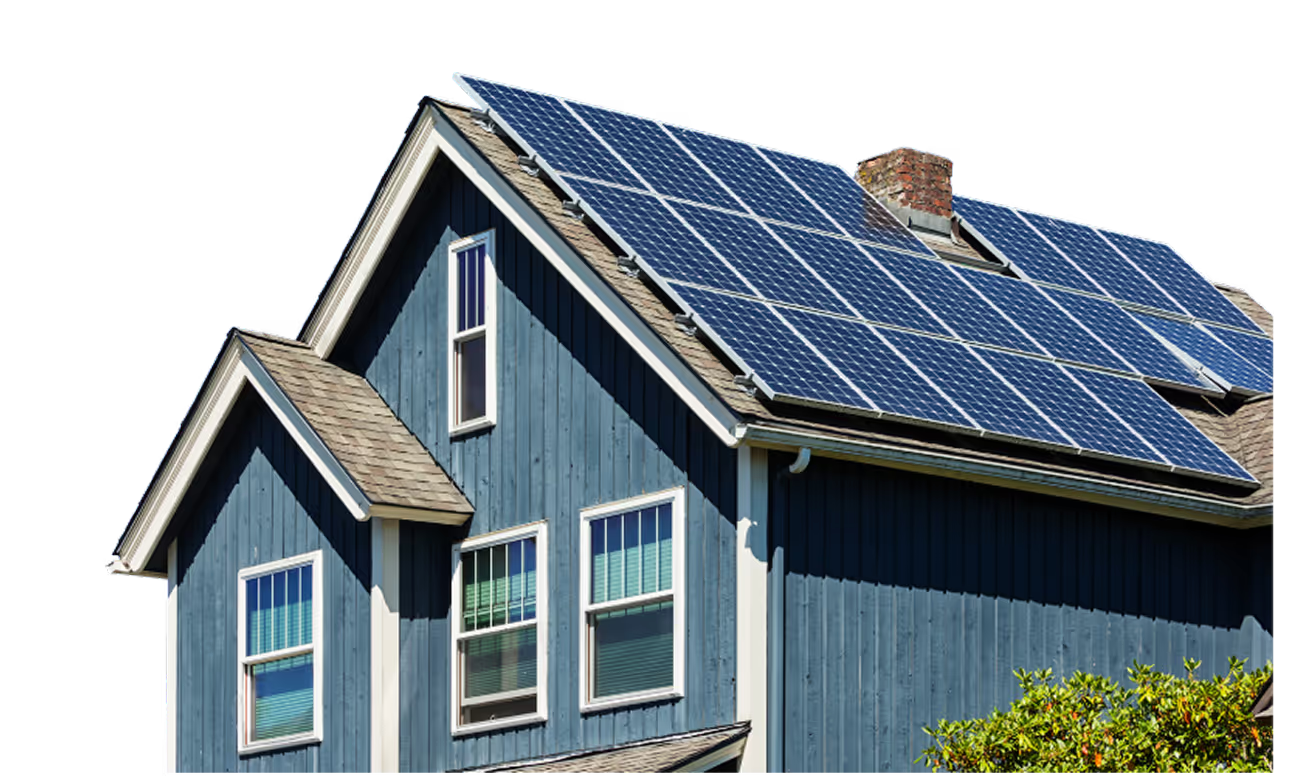
Energy in Malaysia is entering a new chapter, and so is solar. As the Net Energy Metering (NEM) scheme winds down, solar homeowners are now stepping into a market-driven era with Solar ATAP, where electricity exports are valued using the System Marginal Price (SMP).
If you’ve been wondering what that means for your savings, you’re not alone. Many homeowners are asking the same question: Will solar still pay off when export rates change every hour?
In this article, we’ll break down how the SMP works, why it’s being introduced, and what it means for everyday Malaysians who want to save on their Tenaga Nasional Berhad (TNB) bills while supporting cleaner grid.
Spoiler: with the right setup — and smart use of your solar power — Solar ATAP remains one of the most practical, future-proof energy choices you can make.
What Is the System Marginal Price (SMP)?
The System Marginal Price (SMP) is Malaysia’s new way of valuing electricity that solar users export back to the grid.
Instead of a fixed rate like under the previous Net Energy Metering (NEM 3.0) scheme, the SMP changes hour by hour depending on the actual demand and supply of electricity on the national grid.
In simple terms:When the grid needs more power — such as on a hot afternoon when air conditioners are running — the SMP rises. When demand drops, the SMP falls.
This means that the value of your exported solar power is no longer constant, but rather reflects the real-time market price of electricity.
While that may sound complex, the goal is straightforward: Malaysia wants to build a more dynamic and transparent energy market that rewards generation when electricity is most valuable.
For solar homeowners, it’s a shift from certainty to market opportunity — and understanding that change is the first step to making Solar ATAP work even better for you.
How SMP Impacts Solar ATAP Users
Under NEM, every kilowatt-hour (kWh) of electricity exported to the grid earned a fixed rebate. You always knew exactly what your exported energy was worth.
Under SMP, things are more flexible — and that’s both a challenge and an opportunity.
1. Self-Consumption Matters More Than Ever
Your biggest savings still come from using your solar energy directly. Every unit you consume from your own panels means one less unit bought from TNB at the retail tariff.
This saving is consistent, regardless of what SMP happens to be.
That’s why households with higher self-consumption — for example, those who run appliances during the appliances during the day — will see steady, predictable savings.
2. Export Value Can Fluctuate
If you often export excess energy to the grid, your earnings will now depend on when that happens. Exports during high-demand hours may fetch higher rates, while mid-day exports (when supply is abundant) may earn less.
In other words, the SMP makes export earnings variable — but not necessarily lower overall.
3. Smarter Energy Use Pays Off
SMP encourages users to think strategically. For example:
- Running energy-intensive appliances during daylight hours boosts self-use.
- Adding a battery system allows you to store excess solar and export it when SMP prices peak.
Its about shifting from passive savings to active energy management — and that’s where the future of Solar ATAP is heading
The Role of Battery Storage?
As Malaysia moves into the System Marginal Price (SMP) era, battery storage is no longer just a premium add-on — it’s becoming a practical tool to make your solar system smarter and more valuable.
1. Store Energy for Night Use, Not Export
With a battery, your solar energy doesn’t have to be exported at all. Instead, it’s stored during the day and used at night — when the grid electricity you’d otherwise buy from TNB is most expensive.
This approach shields you from SMP price swings entirely. You’re using your own stored energy, not selling it back to the grid.
By matching daytime generation with night-time consumption, homeowners can reach near 100% solar self-use — achieving true energy independence.
2. Reduce Dependence on the Grid
A battery allows you to rely less on TNB’s supply, especially during the evening peak when tariffs are highest.
This means more energy independence and better protection from future tariff increases.
3. Strengthen Backup and Energy Resilience
Beyond financial returns, battery systems provide peace of mind.
They keep essential appliances running during power interruptions — a benefit many homeowners overlook until they need it.
4. Future-Proofing Your Solar Investment
SMP is just the beginning of Malaysia’s transition toward a more dynamic grid.
Integrating battery storage now prepares homeowners for future programmes such as demand response and time-of-use tariffs, where smart energy management can unlock even more savings.
Financial Reality: Is Solar Still Worth It Under SMP?
The short answer? Yes.Even though the System Marginal Price (SMP) introduces variability in export earnings, the majority of a homeowner’s savings still come from avoiding TNB’s retail tariffs, not from selling electricity back to the grid.
1. Savings Driven by Self-Consumption
If you consume most of your solar energy directly, your savings are consistent — because every kWh you use from your own roof is one you don’t buy from TNB. For a typical Malaysian household that uses energy during the day, this can cover up to 70-80% of total consumption, ensuring strong, predictable bill reductions.
Curious how much you could save with your own setup? Try our Solar Savings Calculator to estimate your potential monthly and yearly savings.
2. SMP Affects Only Exported Energy
Only your excess solar — the electricity you don’t use immediately — is subject to SMP-based pricing.
Even if SMP rates dip at certain times, it only impacts a portion of your production. The bulk of your benefit remains stable through self-use.
3. Rent-to-Own Makes Solar Accessible
With GetSolar’s Rent-to-Own (RTO) plan, you can enjoy solar savings without the upfront cost.
- 10-year plan: From RM267/month, 0 upfront, with full warranty and maintenance
- 5-year plan: From RM167/month, ~50% upfront, includes full system care
These plans make it easier for homeowners to hedge against fluctuating electricity prices while enjoying guaranteed system performance.
4. Long-Term Payback Still Strong
Even under SMP, the payback period for solar ATAP remains healthy — especially when you consider:
- Consistent daytime savings
- Rising grid electricity rates
- Long-term equipment warranties
In other words, SMP may slightly reshape how you earn from solar, but it doesn’t change why solar makes sense: energy independence, lower bills, and sustainable returns.
The Bigger Picture: Malaysia’s Energy Transition
The move to the System Marginal Price (SMP) isn’t happening in isolation — it’s part of a broader effort to modernise Malaysia’s energy system and support the national energy transition.
1. Building a Smarter, More Flexible Grid
Malaysia’s electricity mix is evolving. As more renewables like solar and hydro come online, the grid needs to handle energy that’s cleaner but also more variable.
By introducing SMP, Malaysia is encouraging a market-driven approach that reflects the real-time value of electricity — rewarding generation when and where it’s most needed.
2. Aligning with Long-Term Renewable Targets
Malaysia aims for 70% renewable energy capacity by 2050, as part of the National Energy Transition Roadmap (NETR).
SMP supports the way for technologies such as battery storage, smart metering, and time-of-use tariffs.
3. Empowering Consumers to Play a Role
SMP also signals a shift in mindset — from passive energy consumers to active energy participants.
Solar homeowners now have more control over how they use, store, and even sell their electricity.
This democratises the energy market and helps households directly contribute to Malaysia’s sustainability goals.
4. A Step Towards a Greener, More Resilient Future
While change can feel uncertain, SMP is a step toward a more transparent, efficient, and resilient energy system.
And for homeowners, it reinforces one key truth: solar remains one of the most powerful ways to take part in Malaysia’s clean energy future.
How Much Can You Save with Solar ATAP?
Here’s what a typical Malaysian household can expect to save each month with Solar ATAP under SMP, based on GetSolar’s Rent-to-Own system simulation and current TNB electricity rates.
Example: 15.4 kWp Solar System + 42 kWh Battery
- Before Solar: RM 900 monthly TNB bill
- After Solar: RM11.60 average monthly bill
- Total Savings: Up to 99% reduction in electricity costs
- Ownership: Solar is yours after 10 years, at no extra cost
.png)
Even before SMP takes effect, the numbers show one thing clearly: the biggest savings come from consuming your own solar power — and that will aways make sense, regardless of how export pricing evolves.
Solar ATAP Under SMP: The Future Still Looks Bright
Malaysia’s shift to the System Marginal Price (SMP) marks a new stage in how solar energy is valued — one that’s more dynamic and reflective of real market conditions.
While it changes how export earnings are calculated, the fundamentals of Solar ATAP remain strong. Homeowners who maximise self-consumption, consider battery storage, and choose flexible financing options like GetSolar’s Rent-to-Own plans can still enjoy predictable savings, energy independence, and long-term peace of mind.
Change in policy doesn’t mean solar is less rewarding — it simply means it’s evolving. And those who understand how to adapt will continue to benefit the most.
Understanding how SMP affects solar savings in Malaysia helps homeowners plan smarter — and reinforces that self-consumption will always be the foundation of long-term value.
Ready to see how solar can work for your home under Malaysia’s new SMP structure? Chat with us on WhatsApp or get your free personalised solar quote today.

Rent-to-Own Solar. RM0 Upfront cost. Guaranteed Savings
Immediate ROI




Rent-to-Own Solar. RM0 Upfront cost. Guaranteed Savings
(10-Year RTO plan)
+ 10-Year Free Maintenance




.png)
%20Time-of-Use%20(ToU)%20Save%20More%20With%20TNB%27s%20New%20Tariff.png)
%20TNB%20Bill%20Before%20%26%20After%20Solar%20Real%20Savings%20in%20Malaysia.png)



